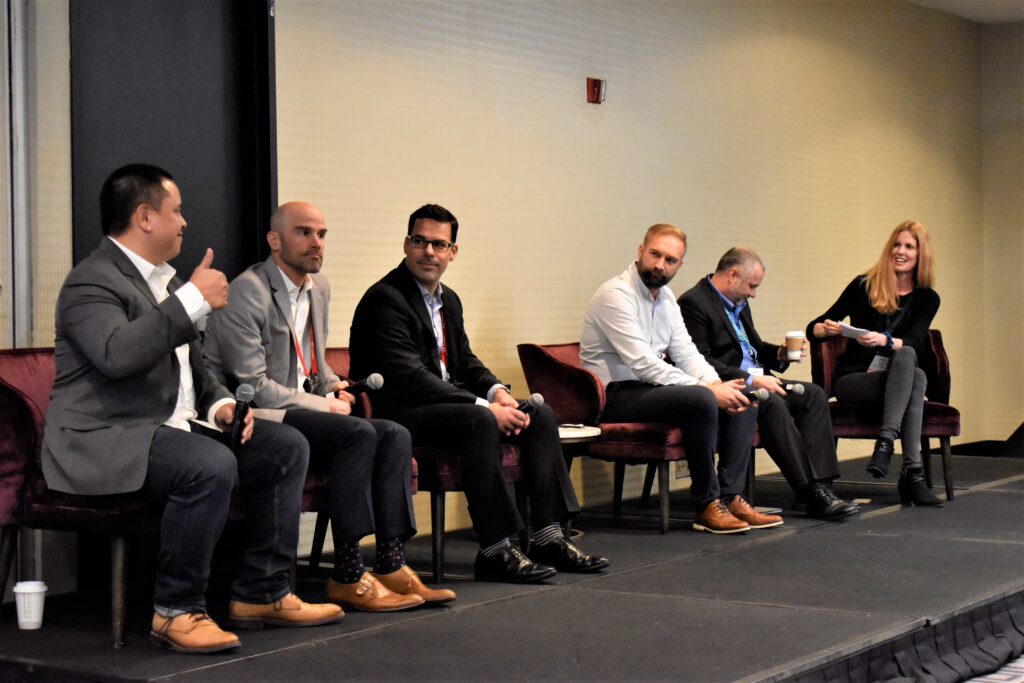Runway Girl Network’s Mary Kirby moderates APEX TECH Space Ecosystem Convergence panel
Share
APEX TECH 2023: Day One – Runway Girl Network Founder and Editor, Mary Kirby opened her panel discussion, How Space Ecosystem Convergence Will Affect Inflight Connectivity, yesterday with a hat tip to Dr. Joe Leader who she thanked for getting her off the farm in Pennsylvania and back “on the runway” to APEX TECH to discuss the magic of the space ecosystem convergence.
“As a journalist covering this space, I have to say it’s absolutely dizzying,” noted Kirby about her panel’s topic. “Amongst others who have mentioned it today, I think a lot of this stuff sounds like magic and I think that’s what keeps the wonder in me going and then it’s just amazing what’s happening out there in this space.”

Moderating a panel featuring Mike Pigott, EVP Connectivity, Anuvu; Dave Bijur, SVP Commercial Aviation, Intelsat; Scott Rees, Senior Director of Operations – Connectivity, Panasonic; Neale Faulkner, Regional VP, Inmarsat Aviation; and Nick Galano, Director of Starlink Sales, SpaceX, Kirby and company discussed a wide range of topics covering everything from frictionless connectivity to the role that Wi-Fi rolling will have in connectivity moving forward and what Faulkner referred to as the upcoming “glut of capacity.”
But one of the highlights of the discussion came from SVP Commercial Aviation’s Bijur on the subject of bandwidth.
“[The airlines] want more and that’s what we’re going to continue to deliver,” said Bijur. “Airlines are going to have to always contemplate when is the right time for me to put more hardware on this aircraft? And anybody on the panel, I think, as their network grows, or as their constellation grows, that’s going to require certain changes to the aircraft as technology develops.
“We still have wireless access points on the airplanes, some of which are 12 years old, right? And airlines are resistant to change and I get why, because they don’t want to mess with the airplane and frankly, it’s not that bad. It’s survivable. But as technology evolves, as time goes on, I think airlines are going to want to do that.
“So whether it’s Gen2 or Gen12 I’m not really sure. But at some point … everybody in this room really is going to have to think about when is the right time for me to do that. Leaving airplanes on the same technology for ten years is the same as leaving the same iPhone in your pocket for ten years. Doesn’t work. Doesn’t make sense.”
Another highlight came when Kirby, and a question from the attendees, steered the discussion toward the subject of space sustainability.
“You can’t explore space if it’s a mess up there,” said SpaceX’s Galono.
“It is important for us to try to set best practices for the industry there. And for us, when you come down to the design of the satellite in terms of sustainability, when end of life happens, it doesn’t stay in space. It will actually naturally de-orbit … no debris comes back down to the earth. In terms of sustainability, we’re very transparent in terms of where we put our satellites. Where’s the orbit? Where’s it gonna go? All of these sorts of things are very important to us in terms of space sustainability, because innovation is important. And there’s no way we get better by making space terrible for everyone.“
Faulkner agreed, adding that he thinks the way space is being managed right now on a global scale is “scary.”
“We know what we’re doing with our satellites [and] there’s no one here that is irresponsible at all in putting satellites up and disposing of them at end of life,” explained Faulkner. “There’s a lot of regulatory framework around that today and it’s not really an issue now. But with the huge amount of satellites that are going up it’s starting to become problematic. So I’m worried about it right now, it needs to be more controlled.”
“Yeah, and the layman is worried about it as well,” added Kirby. “It’s getting kind of crowded up there.”


